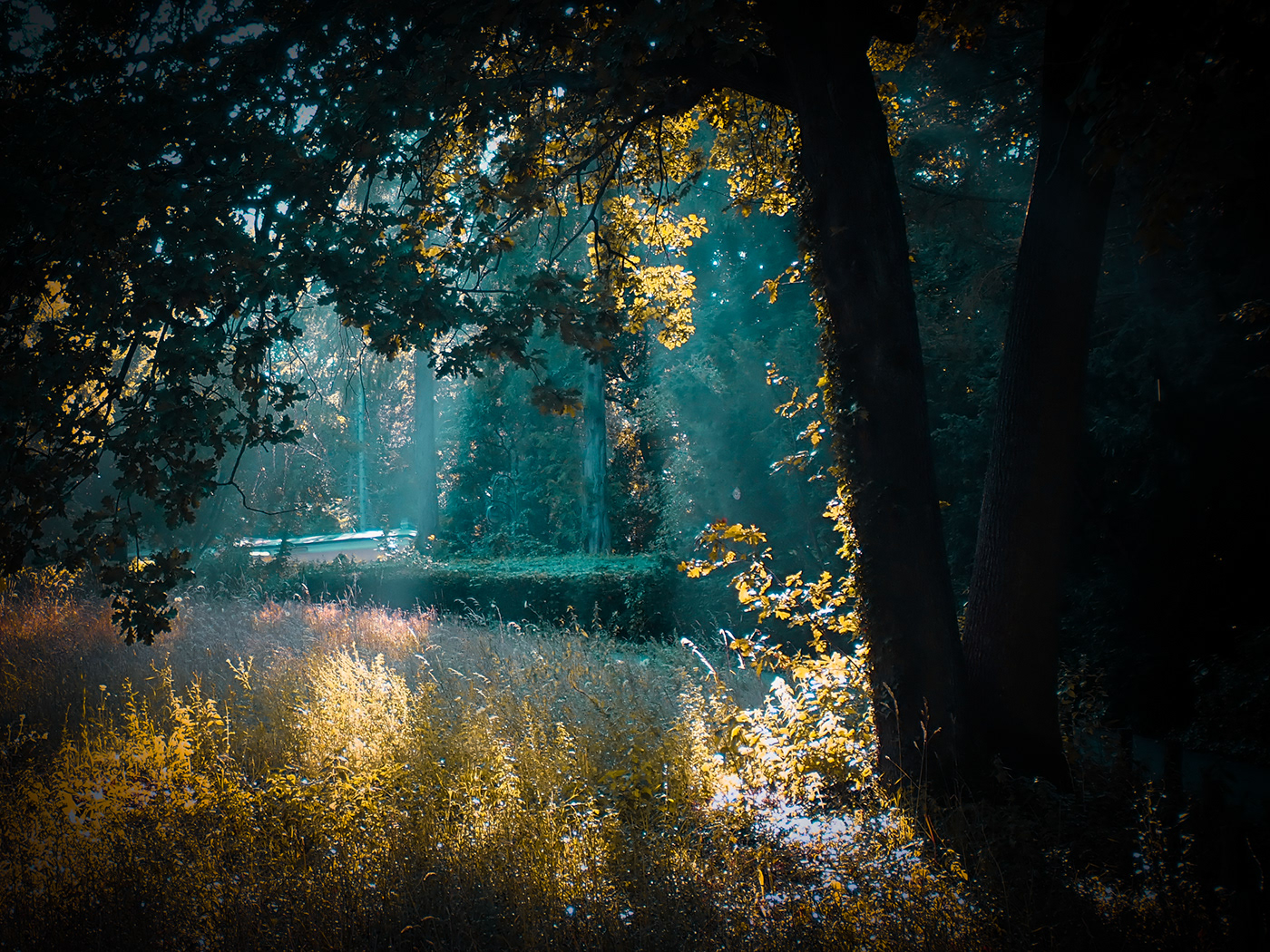
Urban park
As summer came, the warm, sunlit air shimmered, while bumblebees or honeybees, butterflies and a wide range of flies absolved humming and fluttering their flower visits.
If looking into the distance, one would see roofs of houses, streets shining through thickets and numerous sun-hungry people. All is mixed up with forests, meadows, ponds and even a lake, it's a natural refuge in the middle of a big city, an urban park.
If looking into the distance, one would see roofs of houses, streets shining through thickets and numerous sun-hungry people. All is mixed up with forests, meadows, ponds and even a lake, it's a natural refuge in the middle of a big city, an urban park.

urban park Rehberge, Berlin



Coccinella septempunctata

Meadow
In the middle of the park is an open meadow, which is surrounded by forest, mainly consisting of beech, maple, oak and pine. It is a rather dry meadow on which, in addition to grass, mainly sorrel and gray cress thrive. The meadow is an ant paradise.


Rumex acetosa
Ants and Aphids
Whether red wood ant, brown or black garden ants, for them the meadow is a huge and complex world.

Lasius niger
Their nests are hidden in the depths, including the queens and the new brood. Workers are always female animals. Their tasks often include looking after, guarding, protecting and milking the tiniest of grazing animals. This is definitely an advantage for the affected aphids.
Although they are hindered in their efforts to spread by the ants, at the same time they are assured of the comprehensive protection of their guardians. All kinds of predators, such as ladybugs, are stubbornly driven away. But not every threat to aphids is recognized in time by ants.
Video: Ants, Aphids and urban arthropod biodiversity
Some aphid enemies are so small that even the vigilant ant workers are overwhelmed. In addition, parasitoids, for example, appear far too briefly and too quickly on the screen to be chased away in time.
Parasitoid wasps lay their eggs on an aphid and disappear again. The larva penetrates the aphid, and from then on killing takes place in secret, inside the victim itself.

Larva of gall midge Aphidoletes aphidimyza feeding on an aphid
The larvae of a gall midge species, which is specialized in biting an aphid from below and then consuming it bit by bit unnoticed, are also particularly small, may be even additionally smell like aphids, and thus feed on their preys well protected from ant attacks.
But the gall midge larvae have to be particularly careful. They too run the risk of being made prey to their larvae by an appropriately specialized parasitoid chalcid wasp.


undetermined wasp

Forest
Change of scene. Between beech and norway maple trees lies dead wood, the remains of fallen branches and fallen trees. New life, fungi, insects, millipedes, mites and nematodes have long been stirring in their dead tissue. Old wood can be a haven for the diversity of life.
In between, shimmering warmth, a confusion of light and shadow. Pond frogs call excitedly in the neighboring pond, while the humid, warm air creeps through the nose of the human visitor.
In between, shimmering warmth, a confusion of light and shadow. Pond frogs call excitedly in the neighboring pond, while the humid, warm air creeps through the nose of the human visitor.

Anthophora plumipes

A caterpillar meanders on the nearby green fence, undecided where exactly its way should be continued. Possibly, and maybe even hopefully, it is too big as prey for the robber fly, which lurks on a shady twig nearby.

undetermined robber fly


Nymph of the invasive bug species Leptoglossus occidentalis
Urban Nature Refuge
In the North of the city Berlin there are swamps and moors, interrupted by extensive forests, diverse meadows and fields. The landscape can be traced back to the terminal moraine region of Ice Age glaciers. It extends along a tiny river, the Tegeler Fließ. The biodiversity is high, as the most diverse types of landscape are directly related to one another.


true bug, may be Rhyparochromidae

fly of Anthomyiidae




Misumena vatia

seemingly Chrysochraon dispar

Cteniopus flavus

Stenurella melanura
The Drop
After the summer rain, there remain glowing drops that shimmer in the light and always change their appearance, depending on where you look at them from. Suddenly they disappear, have become the breath of a breeze of moist air.
But the very last drop wants to defy its fate. So it staggers before the sun evaporates it, it seems as if it is dancing along the leaf veins until it reaches the edge.

There it falls to the ground, changes its shape in flight, and finally runs down into the depths. But in the warm earth it does not find its equals and so it gets lost between grains of sand and root fibers, old leaves and dead wood.

excursion guide Hank
Now it is no longer what it was, who it was, the little drop, the idiosyncratic little drop, and yet it is not lost, became part of everything, and one day it will actually come to real life again, somehow, somewhere.

Copyrights of all texts, videos, photos, music:
Stefan F. Wirth, July-end of August, Berlin 2021, park Rehberge, Northern Berlin with lake Köppchensee
Stefan F. Wirth, July-end of August, Berlin 2021, park Rehberge, Northern Berlin with lake Köppchensee




